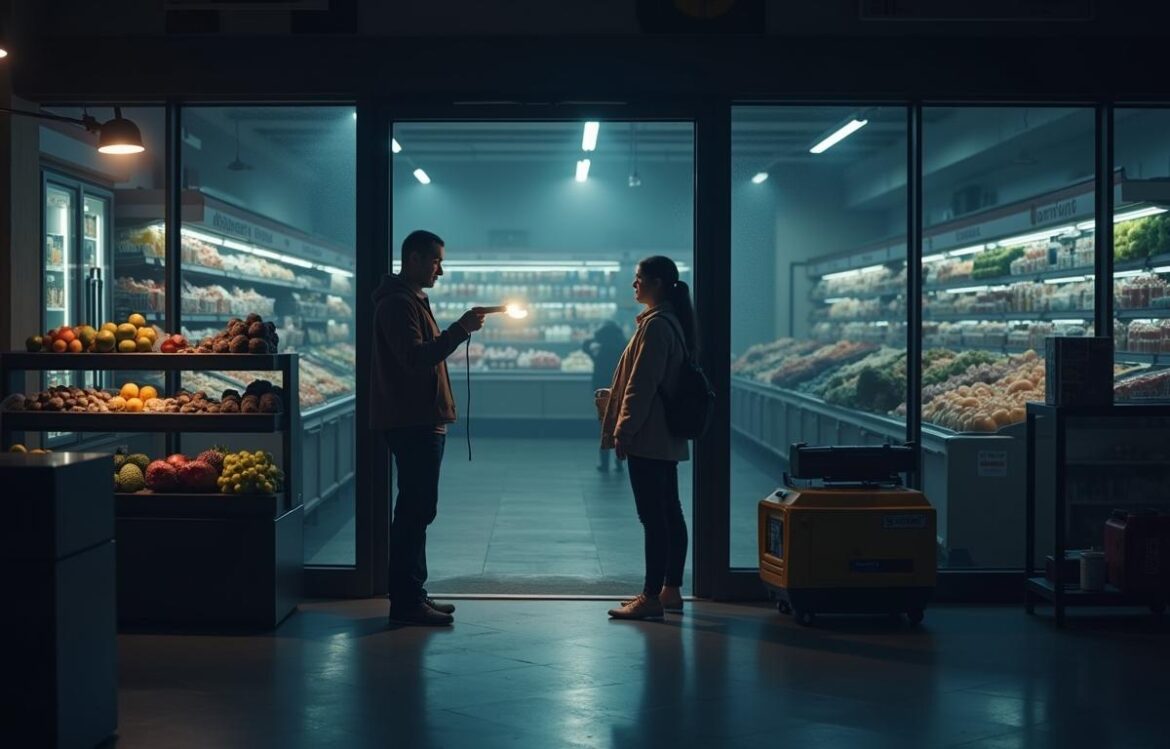The Impact of Power Outages on Retail and E-Commerce
Many businesses, including retail and e-commerce, struggle during frequent power outages. In physical stores, the sudden darkness disrupts sales, ruins perishable products, and tests the patience of customers who crave a smooth experience. Meanwhile, digital marketplaces falter under server failures and payment glitches, leaving shoppers stranded at abandoned checkout pages. These moments can become turning points that either strengthen a brand’s relationship with its customers or erode it entirely.
During a typical busy day, both retailers and consumers expect their transactions to flow without hiccups. A flicker of the lights might seem inconsequential at first, but its ripple effects can travel far. Staff might find themselves unable to process payments, warehouses could experience operational bottlenecks, and customers may lose faith. While short outages can sometimes be brushed off, a longer blackout can cause lost revenue and lingering damage to a brand’s reputation.
Why Reliable Electricity Is Essential for Retail
Electricity is more than just a means to keep the lights on. It ensures that critical in-store systems, like point-of-sale terminals and security cameras, remain functional at all times. When power is lost, brick-and-mortar stores become silent spaces where employees scramble to help confused customers. Many retailers overlook just how heavily they rely on continuous power for every part of their daily workflow.
Building resilience before a crisis strikes means installing backup generators and setting up alternative payment methods. Even a few minutes of downtime can translate into lost opportunities and a drop in sales. By prioritizing steady power access, retailers safeguard their ability to process transactions and keep shelves organized, even when the grid turns unreliable.
Disrupted Sales and Inventory
Stores depend on predictable conditions to maintain accurate inventory tracking. If the power goes out in the middle of a restock, employees may not be able to update their systems, which leads to errors that persist long after the lights come back on. Frozen or refrigerated goods risk rapid spoilage, forcing managers to discard products and accept unexpected losses. It’s a chain reaction that starts with a mere flicker but often ends with wasted inventory and unhappy customers.
Even after the outage ends, reverting to normal operations takes time. Products that expire need removing and systems require recalibration. A slow restart impacts restocking schedules, supplier coordination, and order fulfillment. Customers who once counted on your store to be a reliable source of groceries or household goods might decide to turn elsewhere, especially if the outage repeats soon.
Implications for Customer Experience
A relaxed visit to the store quickly becomes hectic when electronic price scanners no longer function. Long lines, impatient customers, and manual payment processes can test everyone’s patience. People who were simply passing by might step in, see the chaos, and never return. That negative image can spread fast, especially when social media amplifies every frustrating experience.
Retaining trust during outages is crucial. Store managers who prioritize clear communication perhaps with handwritten signs or mobile-based announcements demonstrate a commitment to customers’ comfort. When shoppers see creative solutions, many appreciate the extra effort and respond with loyalty. Effective handling of unplanned disruptions can turn an otherwise embarrassing scenario into a moment of goodwill.
E-commerce Vulnerabilities in Times of Power Loss
Online shoppers assume they can access websites whenever they please. Nonetheless, e-commerce platforms rely on continuous server functionality, proper load balancing, and stable connections. All it takes is a single local blackout to upset a chain of data centers or payment gateways. When checkout pages fail, potential customers often abandon their carts and never return, depriving digital stores of essential revenue.
It’s tempting to assume that only local physical outlets are at risk. However, e-commerce operations in one region can be affected by technical failures in another if they share infrastructure. Customers might see outdated inventory information or face unexpected errors while making purchases. Even short interruptions risk pushing customers to rival sites that promise a more stable experience.
Payment Gateways and Downtime
Credit card processing and digital payment platforms demand a constant link to servers. Any break in connectivity can lead to incomplete transactions or funds stuck in limbo. When a payment error pops up, buyers often get wary, expecting hidden fees or canceled orders. Prolonged outages can cause a damaging cycle of repeated phone calls to customer service and requests for refunds.
During these stressful periods, transparent updates can save an e-commerce brand’s reputation. Automatic emails about potential delays, along with estimated repair times, help maintain customer confidence. If shoppers know a site is proactively tackling the issue, they’re less likely to abandon that retailer for good. Providing realistic timelines and genuine empathy can soften the blow of lost sales.
Technology Solutions and Mitigation Strategies
Staying proactive is the key to protecting against disruptions. Retailers can no longer afford to treat power-related problems as once-in-a-blue-moon events. Installing robust infrastructure not only shields the company from losses but also ensures that employees can perform their tasks smoothly. Taking time to evaluate worst-case scenarios like a citywide blackout or local grid failure helps organizations craft strategies that keep them fueled when the world goes dark.
Modern business continuity models emphasize both hardware and software solutions. Leveraging cloud backups and data redundancy can reduce the impact on internal systems. Conducting occasional drills and contingency tests can highlight unforeseen gaps in operations. With each preparatory step, companies position themselves to weather crises and resume normal operations more quickly.
Backup Generators and Cloud Services
Sophisticated backup generator systems allow businesses to keep primary functions running, from powering essential servers to keeping checkout lanes open. Although not cheap, these generators provide a lifeline when everything else fails. Larger companies invest in advanced models that can switch on automatically the moment the grid fails, minimizing the gap in which services would otherwise be unavailable.
Meanwhile, storing critical data in the cloud can ensure that essential records remain accessible. Even if a local server goes down, online access from a mobile hotspot can help employees maintain some level of service. By layering these failsafe options backup generators, cloud storage, and alternative internet connections retailers can keep meeting customer needs despite less-than-ideal conditions.
Disaster Recovery Plans and Real-Time Communication
A detailed disaster recovery plan steers management and staff through every phase of an outage, from the first few seconds of panic to the last step of resuming business as usual. Documenting each crucial task, such as notifying suppliers or switching payment providers, accelerates a return to normal. Without a structured plan, staff often waste precious moments trying to guess the next step.
Real-time communication tools, often cloud-based, link frontline employees to decision-makers throughout the crisis. Mobile apps or internal messaging platforms help everyone stay aligned on immediate actions and priorities. For instance, a segment of the team can handle in-store order cancellations, while another coordinates delivery delays. This division of responsibilities prevents confusion, allowing for better customer service during an already tense moment.
Strengthening Customer Trust During Unplanned Disruptions
Trust is easily broken when people feel uncertain about whether a store can fulfill their needs. Customers want to know that, even if the lights flicker, they can still count on a friendly face at the register, a working payment system, or an accurate update from the company website. If service repeatedly falters during power issues, shoppers may lose faith and never return.
Maintaining transparency can make all the difference. Quick social media updates or text alerts can inform shoppers if certain locations are still operating, or if online orders might face a brief delay. Likewise, emphasizing a robust disaster recovery plan shows you take their experience seriously. People are often more forgiving when they see genuine attempts to address the problem head-on.
Consistent outreach is another tool for retailer-customer bonds. Offering small compensations such as store coupons or free shipping codes can ease frustrations. This approach doesn’t just mitigate the short-term disappointment. It effectively transforms a potential negative into an opportunity to show gratitude for customer patience. A sincere, human touch can make up for technology’s failures sometimes better than spiffy new gadgets ever could.
Retailers and e-commerce providers that prepare for disruption are ultimately betting on their own stability. By investing in solutions like backup power, up-to-date software, and strong communication platforms, they place themselves one step ahead. There will always be factors beyond any individual’s control, but companies that focus on resilience can vastly reduce the impact. In these hectic moments, steady leadership and smart planning help reassure customers that, no matter the outage, they can rely on the same level of service they’ve come to expect.




